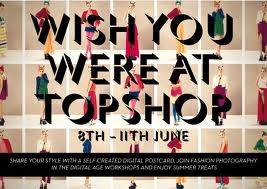The digital space has changed the way companies operate and consumers purchase products, bringing all these processes more online rather than offline. However, in the last few years, a new shift in consumer behavior has forced brands to revise the existing face of e-commerce. Digital has begun to evolve, as consumers become more careful, more dedicated and definitely more active when choosing a product.
It is not easy, for example, to buy a pair of sunglasses online because you need to try them on. The same thing happens for items that need to be felt, touched, seen from a physical point of view. This tactile interaction is something that the online environment doesn’t offer, along with face-to-face conversations with sales associates to get advice or the possibility of returning a product straight away. This is likely why the majority of purchases still occur offline, despite the huge potential brought by the online world.
The solution is omnichannel, a means through which people can take advantage of the tangible nature of offline and the speed and efficiency of online, by starting their journey on one channel and terminating it on a different one - as physical store, web, mobile and social media are all linked together.
In harmony with this revolution, the mobile-first platform Instagram is playing a crucial role in engaging consumers. It gives brands the possibility to create original content, but also allow consumers to actively participate in this creative process.
It is important to highlight here a relevant difference between brands having a presence on Instagram just to broadcast customers and brands using the social platform to engage consumers. In the latter, it is not just a matter of posting pictures and get “likes”, but rather using it to enable customers to “float” between different channels, which means going online through an offline involvement, and consequently create omnichannel experiences.
Let’s see this concept in practice now. Shoppers at Topshop were invited to attend a free styling and make-up session and build a digital Instagram postcard, called “Wish you were at Topshop”. After that, they could take a copy of the postcard home and also post it on Facebook and Topshop gallery.


Urban Outfitters has launched a real contest based on Instagram, by interacting with its customers in the fitting rooms.
Customers are encouraged to take a picture of themselves while trying on Urban Outfitters clothing and then post it on Instagram tagging the brand using @UOEurope. On its side, the retailer chooses its most fashionable followers and shows them off by using the hashtag #UOStyle.
Even more extreme, the food manufacturer Kellogg’s literally converted Instagram photos into a kind of currency. In Stockholm, the Kellogg’s store became an Instashop, where people could exchange Instagram pictures for a free box of cereal. For the brand this constituted a way to promote a new product and drive sales.
And this is just to mention a few examples. Powerful brands like Levi’s, Tiffany, Heineken and Red Bull have successfully integrated Instagram in their campaigns too.
As the online and offline scenes are becoming less and less separate, retailers must consider embracing multichannel strategies. Using Instagram as a medium to engage people in store, allow them to interact with physical items and immediately transfer this experience online within a social stage is an incredibly forward-thinking strategy with a huge future potential, for three main reasons:
- Digital marketing is increasingly driven by photos and videos, that are primarily created and distributed by consumers. The visual nature of Instagram is obviously in line with this tendency, maybe even more than Facebook.
- Given that Instagram has recently reached 150 million active users worldwide, becoming the fastest-growing social site globally (Tech Crunch, 2014), brands will only continue to flock to the platform not only as a consumer engagement tool, but to drive quantifiable business results.
Lastly, it is clear that people love to be in the know. Giving them the possibility to visually become part of the brand they like, by posting pictures as if they were models, is certainly a clever marketing tactic.


Thank you for some other informative website. Where else may just I get that kind
of info written in such a perfect approach?
I’ve a project that I’m simply now operating on, and I have
been at the look out for such info.
Feel free to visit my web blog; free instagram followers
I enjoyed reading this post
we are every day happy.
I quite like reading through a post that will make people think.
Also, many thanks for allowing for me to comment!
Wаy cool! Sоme extremely valid points! I appreciate уou writing this post and also the
rest of the website іs really good.